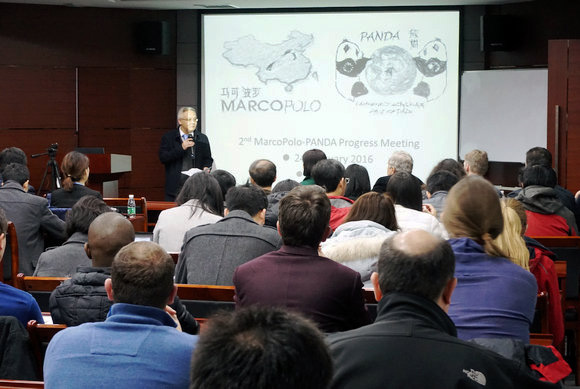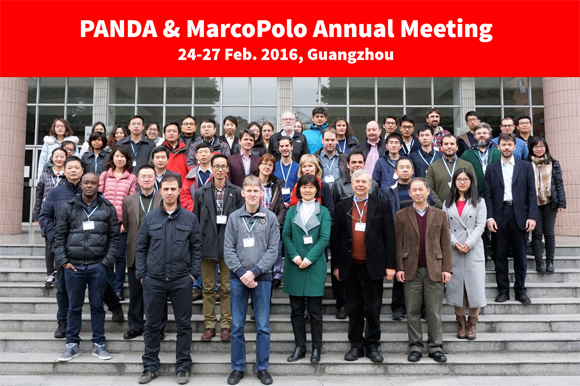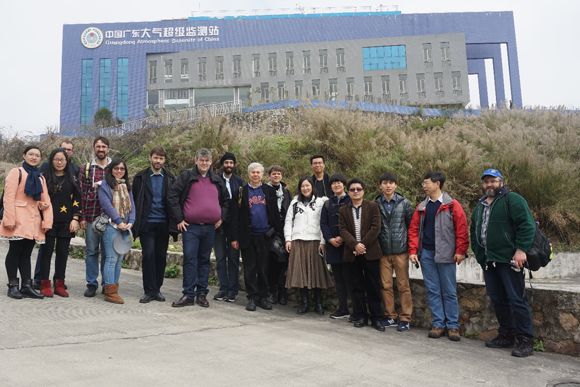SYSU holds “PANDA & MarcoPolo” annual meeting
Source: School of Atmospheric Sciences
Written by: School of Atmospheric Sciences
Edited by: Wang Dongmei
The annual meeting of the key project Panda & MarcoPolo funded under EU’s 7th Framework Program (FP7) was successfully held in Sun Yat-sen University (SYSU) on February 24-27, 2016.
Vice President of SYSU Prof. Ma Jun, Secretary of Party Committee Mr. Yang Jianlin and Vice Dean Prof. Yang Song at School of Atmospheric Sciences attended the meeting and made a speech respectively. Nearly 80 participants from a total of 28 organizations from EU and China participated in the meeting, including Max Planck Institute for Meteorology (MPI-M), Royal Netherlands Meteorological Institute (KNMI), French National Center for Scientific Research) (CNRS), European Centre for Medium-Range Weather Forecasts (ECMWF), Institute of Atmospheric Physics, Chinese Academy of Sciences (IAP-CAS), Anhui Institute of Optics and Fine Mechanics (AIOFM) – Hefei Institute of Physical Sciences (HIPS), Tsinghua University (THU), Peking University (PKU) and National Satellite Meteorological Center (NSMC). Prof. Wang Xuemei from School of Atmospheric Sciences, the CO-PI of the project, chaired the meeting.

"PANDA & MarcoPolo" annual meeting held in SYSU
Vice President Ma Jun expressed sincere welcome to the participating experts, scholars and delegates firstly, he also introduced the 5-Campus development plan of SYSU. Thereafter he elaborated the air quality current status in China, indicated it had attracted extensive attention by our government and the community. Finally, he enthusiastically invited all outstanding scholars to join our university and build a world-class university together.
The participants reported and discussed their recent achievements on atmospheric emission inventory, inversion and assimilation of satellite data, and numerical modelling of air quality.
The Panda & MarcoPolo project is funded under EU’s 7th Framework Program (FP7), aiming to incorporate the observational information on satellite and ground to numerical modelling, study the mechanisms of air pollution in China, integrate the academic knowledge and experiences from EU and China, and provide the policy makers with scientific tools for prediction, prevention and control of air pollution.

Group photo

Visit to Guangdong Atmospheric Supersite of China